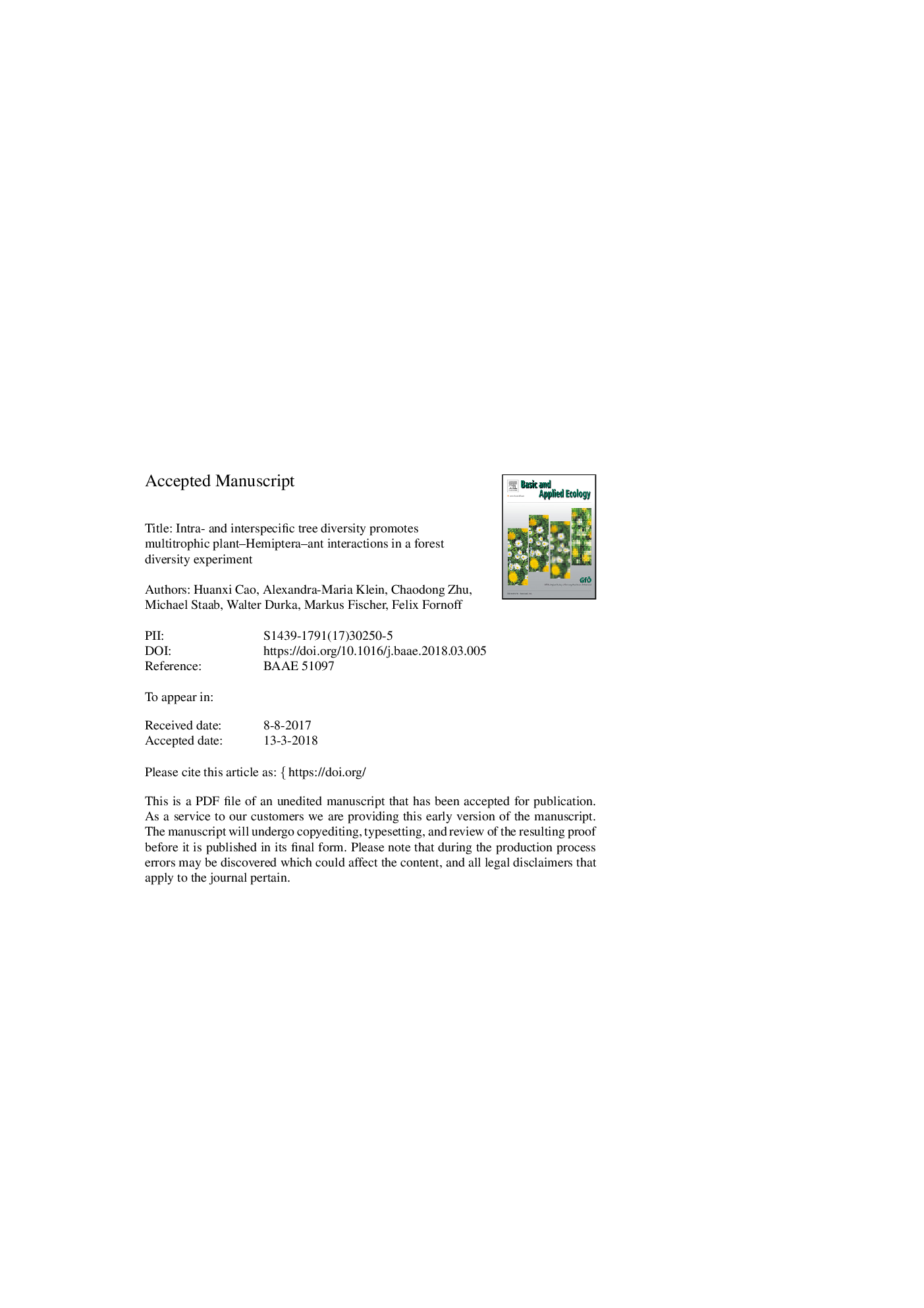| Article ID | Journal | Published Year | Pages | File Type |
|---|---|---|---|---|
| 8847004 | Basic and Applied Ecology | 2018 | 24 Pages |
Abstract
Interactions between species of different trophic levels have long been recognized as fundamental processes in ecology. Although mounting evidence indicates that plant species diversity (PSD) or plant genetic diversity (PGD) can influence the plant-associated arthropod community, these two fundamental levels of biodiversity are not often manipulated simultaneously to assess their effects on species interactions. We used a large tree diversity experiment (BEF-China), which manipulates PSD and PGD in a crossed design to test individual and combined effects of PSD and PGD on multitrophic interaction networks and interaction partner species richness and occurrence. We focused on two tree species, on which sap-sucking Hemiptera and interacting ant species commonly occur. This tri-trophic interaction can be divided into the antagonistic plant-Hemiptera interaction and the mutualistic Hemiptera-ant interaction, known as trophobioses. Qualitative evaluation of tri-trophic interaction networks at different PSD and PGD combinations showed increased interaction partner redundancy at high PSD and PGD. This was supported by increased Hemiptera species richness at high PSD and PGD. Furthermore, the data indicate higher occurrence of Hemiptera and trophobioses and higher trophobiotic ant species richness with increasing PSD and PGD. As no plant diversity component alone caused an effect we conclude that the combined effect of high PGD and high PSD might be additive. In summary, as plant genetic diversity, especially at low species richness, seems to increase the interaction partner redundancy in interaction networks and the diversity of interacting communities, we suggest that genetic diversity should be considered in forest conservation and restoration programs.
Keywords
Related Topics
Life Sciences
Agricultural and Biological Sciences
Animal Science and Zoology
Authors
Huan-Xi Cao, Alexandra-Maria Klein, Chaodong Zhu, Michael Staab, Walter Durka, Markus Fischer, Felix Fornoff,
